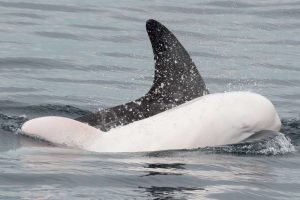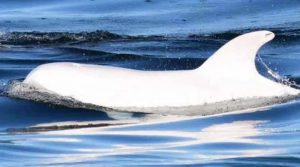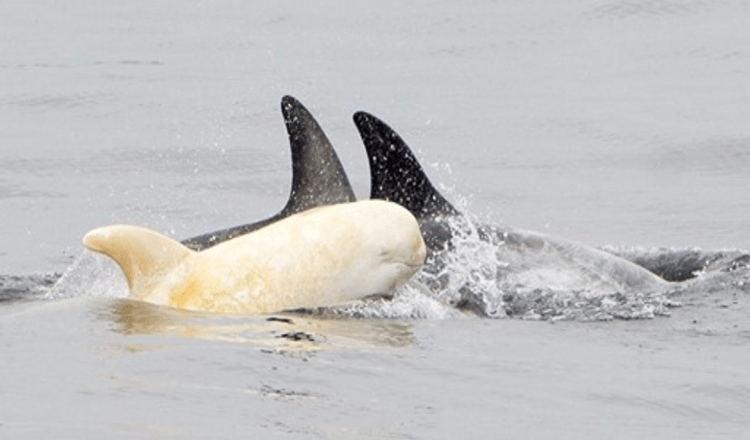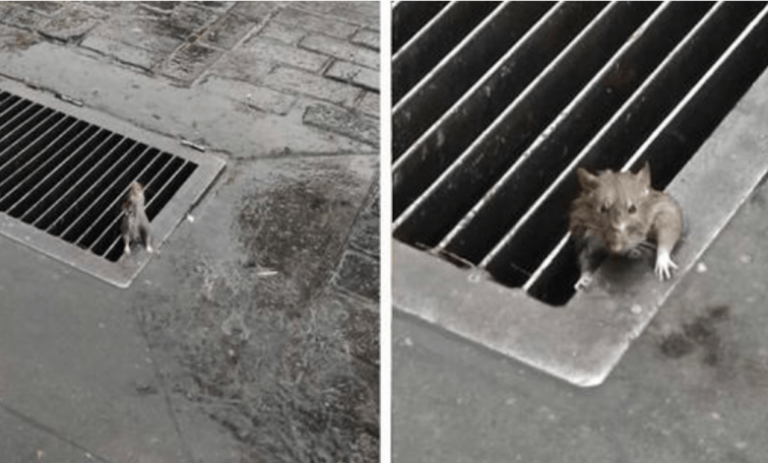Albino animals in the wild are hard to find, albino sea creatures are even more elusive.
So you can imagine the excitement from some lucky whale watchers who caught a glimpse of a pure white dolphin in the open ocean.
According to Live Science, the young white dolphin was spotted in California’s Monterey Bay during a Blue Ocean Whale Watch boat tour. Some even managed to catch a video of the rare creature.
Albinism in the wild is incredibly rare, and I believe this is the only known albino Risso’s dolphin in the eastern Pacific,”
The species was identified as a Risso dolphin, and according to one of the tour co-owners, this wasn’t the first time that this dolphin was been spotted in the area.
The unique dolphin was approx three-year-old at the time of the sighting. It was previously seen when it was a baby and has clearly grown into a healthy young juvenile.
The dolphin was swimming in a pod of around 50 other dolphins during the latest sighting.

Albino animals are white or pink, this is due to the cells that usually produce melanin are not doing their job very well.
Melanin is the pigment that gives skin, hair and eyes it’s coloration. This means albino animals usually have pink eyes as well as the red blood vessels in the dolphins retina reflect light into the light sensitive tissue at the back of the eye.
Normal animals have melanin in their pupils which absorbs incoming light, keeping it from reflecting off of the retina.

The white dolphin may look cute, but albino animals are often riddled with health problems.
Advertisement
“Albino animals may be more prone to skin problems because there’s no melanin to protect the skin from UV [ultraviolet] rays, and they can have poor eyesight and hearing,” Cummings said. “As far as we can tell, this juvenile appears healthy,” said Kate Cummings, co-owner of the whale-watching company.
“Risso’s dolphins often form nursery pods, which consist of mothers and their calves,” Cummings said. “They were most likely on the hunt for squid, their favorite food source.”
Please SHARE this story with your friends and family.



